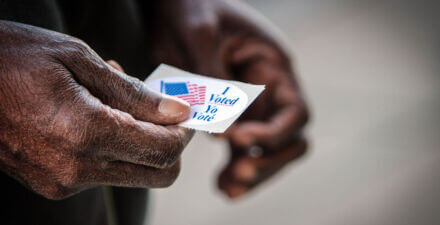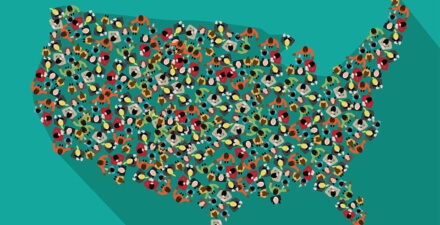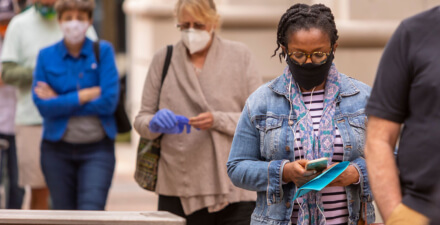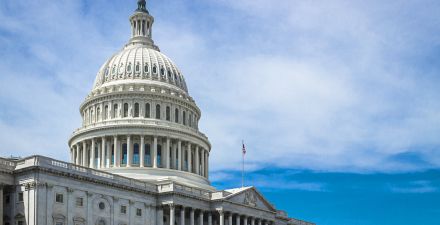Evidence from the 2020 election shows how to close the income voting divide
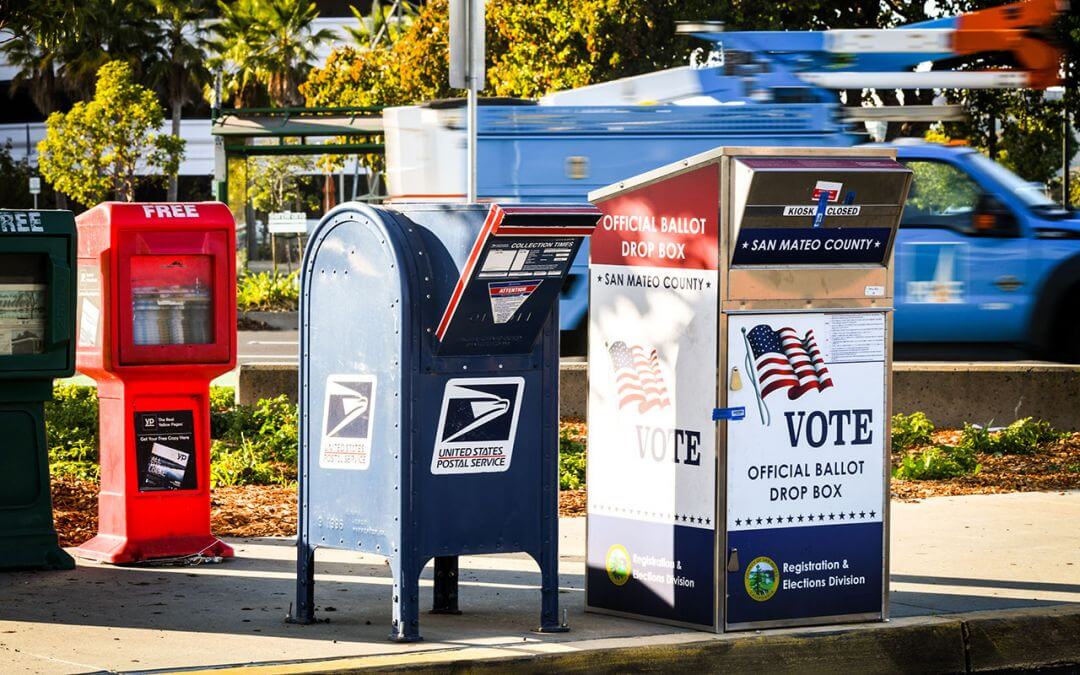
The 2020 election year was unprecedented in many ways. The coronavirus pandemic changed most Americans’ relationships and interactions with society and the economy, including their civic participation in the 2020 election, which saw numerous new voting rules and regulations implemented across states in response to the public health crisis.
So far, the evidence on how these new rules and regulations impacted voter turnout last year has been mixed. But thanks to recently released data from the U.S. Census Bureau that measure turnout across race, income, and place, we can see these rules helped boost voter turnout, especially among low-income Americans, and reduced the income divide in political participation.
As we found in our previous report on political inequality and voter suppression, full participation in our democracy matters not just for fairness and government legitimacy, but also for combating economic inequality and spurring strong, stable, and broad-based economic growth. Yet structural racism and systemic flaws in the country’s voting apparatus—such as a lack of guaranteed time off for hourly workers to vote and underresourced polling places in densely populated areas—mean that White, high-income Americans vote at higher rates than low-income Americans of color.
The result? Richer White voters have more influence on which laws get passed, biasing economic policymaking in favor of the rich and powerful and against evidence-based proposals that would combat structural racism and deliver equitable growth, such as a higher minimum wage, increased taxes on the rich, and a stronger system of income supports.
Unfortunately, but not unpredictably, this income- and race-based voting bias was not reversed in the 2020 election. Our analysis of the new Census data shows that it continues to fester dangerously in the heart of our democracy.
Using the Current Population Survey’s Voting and Registration Supplement, we divide 2020 voters into three groups based on annual earnings: low-income individuals with incomes lower than $40,000; middle-income individuals with incomes between $40,000 and $75,000; and high-income individuals with incomes of more than $75,000. The 2020 election continued a long trend of stark divides among these groups.
According to the data, about 65 percent of low-income individuals voted, compared to 88 percent of those in the high-income category. In recent election cycles, turnout has been up in every income group, but this disparity between high- and low-income voter turnout persists. (See Figure 1.)
Figure 1

Within these top-line national numbers, though, there is much variation between states both in terms of changes to voting laws amid the pandemic and voter turnout. This variation can help researchers better understand the relationship between different voting reforms, expanded access to the ballot booth, and voter turnout.
There is already strong evidence that certain changes to voting regulations would provide more equitable access to voting across race and income levels in the United States. These changes include easing the voter registration process, reducing wait times, guaranteeing paid time off to vote, restoring voting rights to felons, and using federal authority to crack down on racial discrimination in state election administration. But the evidence has been more mixed on whether so-called convenience reforms—which make voting easier for those already registered by, for example, expanding early voting and vote by mail, or increasing the number of ballot drop boxes—also help close the racial and income gaps in political participation.
Because state election administrators responded in many different ways to the coronavirus pandemic, the 2020 election provides the means to test which convenience reforms most increase voter participation—keeping in mind, of course, that many extraordinary factors influenced voting in the 2020 election. As such, the statistics that follow are offered as descriptive evidence only. Recent research shows that voting increased at similar rates in most states in 2020, regardless of mail-in voting policies. But mail-in voting has been shown to increase voter turnout and may help decouple the income-voting link. We pick apart the data on income and race to show some suggestive evidence of how these policies play out across different groups.
Using the National Conference of State Legislatures’ guide to voting policies for the 2020 election, we divide states into three categories. First are those that either mailed applications for a mail-in ballot or simply mailed ballots to eligible voters without requiring voters to request anything from their state or county boards of election. These are the 23 states (including the District of Columbia) where voting in 2020 was easiest. Next are states that did not automatically mail anything to voters but did allow all voters or voters with COVID-19-related excuses to request a mail-in ballot. Some of these 24 states always allow voters to request a mail-in ballot, while others changed their rules for 2020 in response to the coronavirus crisis.
Finally, there are four states—Indiana, Louisiana, Tennessee, and Texas—that made no modifications to their voting policies amid the pandemic. These states kept in place rules that restrict access to mail-in ballots to only those voters with an excuse for not being able to vote in person, such as being out of the country or being physically unable to go to the polls. These were the hardest states to vote in during the 2020 election.
We calculated turnout rates in each state and then averaged state-level values in each of the three categories to avoid biasing statistics toward larger states. It should also be noted that there are relatively few states in the third, “no change from normal policy” group, so estimates in this category are less reliable. We dropped results when a race-by-income-by-state calculation had fewer than 10 unweighted survey respondents to draw on.
Voter turnout overall was very high in 2020—the highest presidential election turnout since 1900. Given the difficult circumstances surrounding the pandemic, this is a notable feat, and it may be at least partially attributable to the ease with which many states made it possible to vote by mail. Our analysis shows that states where vote by mail was easier saw higher turnout overall. (See Figure 2.)
Figure 2

While states that made it easier to vote by mail saw higher turnout across the three income groups we analyzed, these policies were more beneficial for low-income individuals. In 2020, turnout for high-income individuals was only 1.4 percentage points higher in states that automatically mailed ballots or applications to voters, compared to those that only moderately expanded accessibility, and just 3.6 percentage points higher than states that did not change their policies at all. But for low-income individuals, turnout in the most accessible states was 4.8 percentage points higher than in moderately accessible states and 7.5 percentage points higher than in states that made no policy changes. (See Figure 3.)
Figure 3

Accordingly, there is suggestive evidence that the reforms that made it easier to vote by mail did close the income divide in political participation. In the most permissive states, the gap between high-income and low-income voter turnout was about 17 percentage points. But in states that made fewer accommodations or made no policy changes at all, the participation gap between rich and poor voters was 21 percentage points.
Many observers of state election policy have suggested that less permissive voting regimes are intended to reduce participation by Black voters and other voters of color. States with less permissive voting rules in 2020 did have larger Black populations: States in the most permissive voting category are, on average, 9.3 percent Black, while those that somewhat expanded mail-in voting or made no changes at all are, on average, 15.3 percent and 14.5 percent Black, respectively.
Yet voting restrictions do not appear to have affected Black voters considerably more than White voters. Average White turnout in 2020 was 5 percentage points higher in the most permissive states, compared to the two less permissive categories. In the same comparison, the difference in Black turnout was 6 percentage points. One reason for this relative parity by race is that middle- and high-income Black voters showed incredible resilience to their states’ voting regimes. In fact, these individuals voted at about the same rate in all three of our policy regime categories. In contrast, high-income White individuals voted less in states with more restrictive voting regimes. (See Figure 4.)
Figure 4
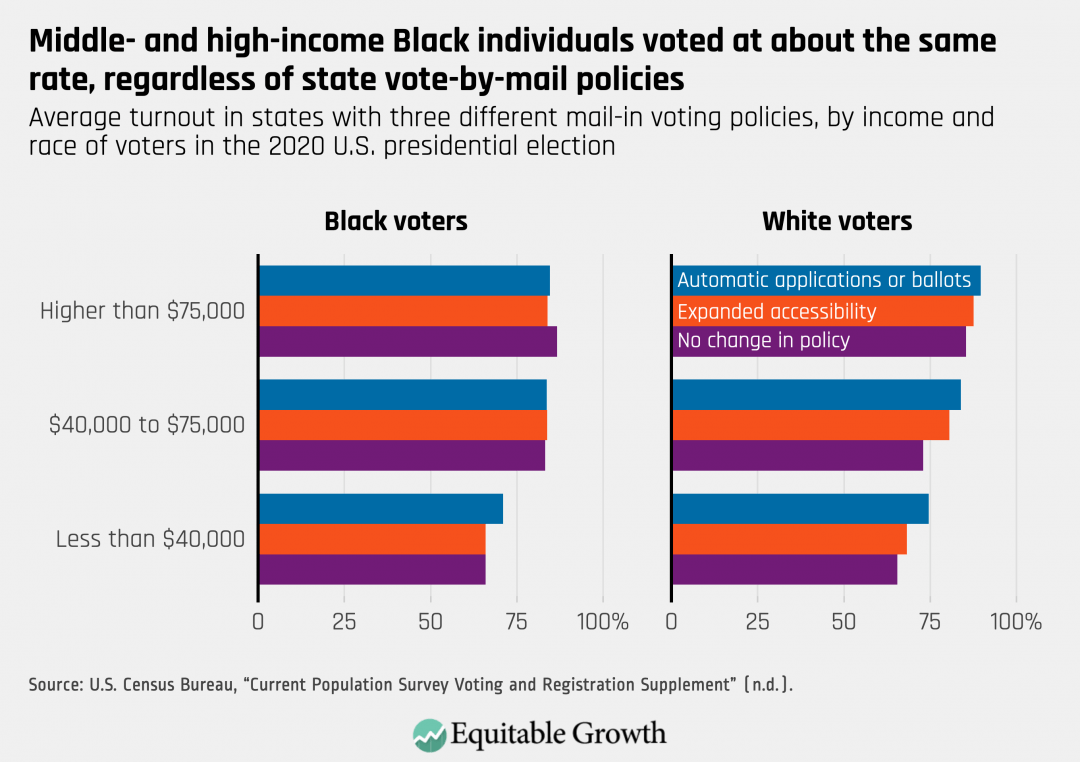
Latinx citizens tend to vote at lower rates than both Black and White citizens in every income category. Their sensitivity to the ease of voting in the 2020 election was similar to that observed for White voters. Low-income Latinx citizens in the most permissive states were 4.5 percentage points more likely to vote than those in states that only somewhat expanded accessibility, compared to about 6 percentage points for White citizens. For middle-income Latinx voters, the discrepancy was about 6 percentage points, compared to about 3 percentage points for White citizens.
It is difficult, however, to make any inference about Latinx voting in the least permissive states as this category is composed of three states with relatively low Latinx populations and one state with a disproportionately large Latinx population—Texas—making the results mostly reflective of this one state. In addition, because of the limited sample sizes of Asian American, Pacific Islander, and Native American communities in the data, we were not able to conduct a reliable cross-state comparison of voting regimes’ impact on these communities.
Nonetheless, the evidence is clear that expanded access to vote-by-mail increases voter turnout. Yet many state legislators are working hard to reverse these reforms and even enact new laws that make it more difficult to vote. According to the Brennan Center for Justice, 28 laws restricting voting access have been enacted in 17 states, with these numbers expected to rise across those state legislatures still in session.
Florida’s new voting law, for example, includes several provisions that make it harder for voters to request and return absentee ballots. In addition to requiring proof of identity for absentee voting, the law also restricts the use of ballot drop boxes. Similarly, a provision in Georgia’s new voting law requires voters to have a state-issued driver’s license or ID on file to request an absentee ballot. This requirement could adversely affect voters of color, who are less likely to have a state-issued ID than their White peers.
Then, there’s the U.S. Supreme Court ruling from earlier this month, which will make it even more difficult to challenge state election regulations that have a disparate impact on voters of color under the already defanged Voting Rights Act.
One way to circumvent these attacks on voting rights and access is to enact federal legislation that overrides the Supreme Court’s limited reading of the Voting Rights Act and guarantees more permissive state rules. Congress is currently considering a major overhaul of federal voting law via the For the People Act (also known as H.R. 1 in the U.S. House of Representatives and S. 1 in the U.S. Senate) and the John Lewis Voting Rights Advancement Act (or H.R. 4 in the previous Congress, but not yet introduced in this Congress).
If passed, these bills would address major barriers to voting by requiring at least 2 weeks of early voting in all states, limiting voter purges and other discriminatory voter suppression tactics, and automating voter registration, among many other provisions. As former U.S. Treasury Secretary Robert Rubin recently argued, these bills are “key to our economic future,” with the potential to “pave the way for policies that achieve the interdependent objectives of strong growth, widespread economic well-being and reduced inequality.”
The data from the 2020 elections are clear: Making voting easier helps close the gap in political participation along income lines and consequently fosters greater consideration of the voices and economic policy priorities of more marginalized individuals when policymakers craft legislation. Indeed, it is a vital aspect of a flourishing and strong democracy. Yet if some states continue to enact restrictive voting legislation—and the federal government does not step in to stop them—then our democracy may reverse much of the progress made in 2020 and set the country back for generations to come.



